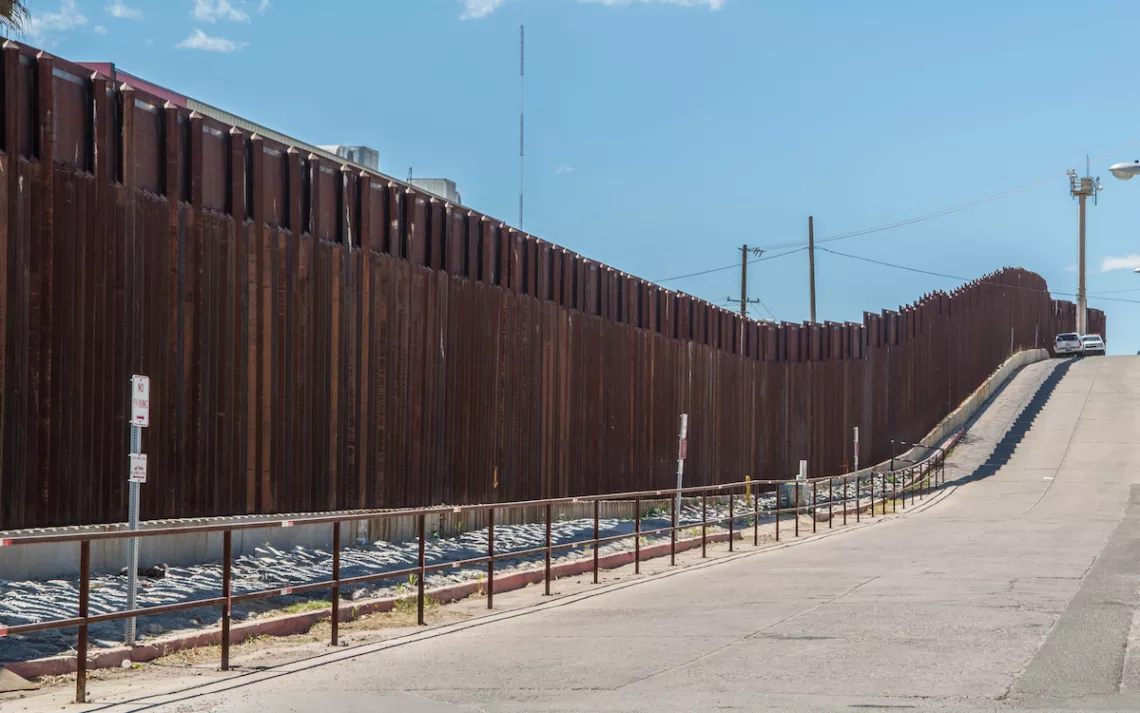Border Walls Are Good at Keeping Out Everything But Humans
A "Bioscience" report documents the danger of border walls to wildlife

Photo by Rex_Wholster/iStock
A border wall is useful at keeping out almost every animal but humans. That’s the conclusion of an article published today in the journal Bioscience by field-ecologist-turned-journalist Lesley Evans Ogden. “It’s the worst of all worlds,” says Jamie McCallum, a UK scientist who studies how the growth of the borders affects wildlife.
In 2010 and 2011, McCallum and a group of researchers placed motion-sensing camera traps in the Madrean Archipelago, an area in Arizona that is one of the most biodiverse areas in the world, on the border between the United States and Mexico.
When they examined the footage, they found that cameras had documented the presence of 17 mammal species, and quite a few humans. The camera traps in unfenced areas saw much more traffic from coati and pumas, which appeared to be going out of their way to make it around the fence. There was no such difference found for humans. The camera captured an equal number of them in fenced and unfenced areas, suggesting that the fence was not doing much to impede their cross-border voyaging.
This was not the effect McCallum was expecting. “I thought it would have at least some kind of trace of an effect,” he told Evans Ogden. “Even if it wasn’t a statistically significant finding. But it didn’t appear to.”
Cross-border ecology is not easy to do, says Evans Ogden. “It’s hard to get funding for that kind of research. No one wants to uncover bad news, and it’s likely to be bad news.” Also, she says, the U.S./Mexico border can be a dangerous place to work, with more heavily armed visitors than the average ecological research site. In recent years, scientists have not been able to directly compare the wildlife traffic before and after the installation of a new wall section, because the location of new construction is kept confidential.
In Europe, where cross-country scientific collaboration is built into the European Union’s Habitats Directive, research into borders and ecology is more common. The removal of border walls after the cold war helped European wolf populations, while the recent construction of fences in Slovenia to deter refugees has been hard on black bears, lynx, and other large carnivores.
There are ways to make borders less dangerous to wildlife, Evans Ogden says. Horizontal barriers that are close to the ground can prevent cars from driving through, but allow for the safe passage of most animals.
Surveillance from the air can be less dangerous to wildlife than surveillance via patrol car. When David Christianson, a University of Arizona researcher who studies the endangered Sonoran pronghorn antelope, looked at camera-trap and radio-collar data, he saw that the pronghorn were avoiding even an unfenced border, possibly due to frequent patrols by U.S. Customs and Border Protection agents, who have been known to go off-roading directly through endangered-species habitat.
But the best border wall, says Evans Ogden, from the perspective of wildlife, is none.
Note: This article has been updated to add context and clarification.
 The Magazine of The Sierra Club
The Magazine of The Sierra Club







